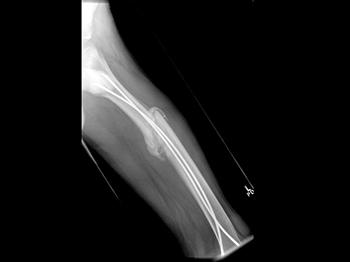
A fall—whether down the porch steps or on a slick patch of ice in the driveway—can have a big impact on anyone, but it can be especially difficult for older people. When a person over age 65 fractures a bone, it can take more than three months for the bone to heal – compared to a month and a half for someone younger.
A recent study led by Duke researcher Benjamin Alman, MD, published in Nature Cell Biology on January 6, provides new insights on the origin of cells that regulate the pace of healing and may explain why healing takes longer as people get older.
“The body relies on multiple types of cellular processes to heal bone, but certain blood cells are important to the healing process,” said Alman, chair of the Department of Orthopedic Surgery and lead author on the paper. “In this study, we found that one of these cell types was formed before we are born.”
Early in embryonic development, prior to the formation of the circulatory system, cells known as osteoclasts are needed to make a space for blood cells to develop. Because these cells are needed before the circulatory system develops, they form differently than cells made later in life.
 Benjamin Alman, MD
Benjamin Alman, MD“What we found surprising is that the osteoclasts made very early in development survive in the spleen and move through the circulation to contribute to fracture repair in mature animals,” Alman said. “As these run out, different cells are used for fracture repair and these are not always as efficient.”
Previously, scientists thought that osteoclasts in mature animals derived from new cells made in the circulation system, and not from this embryonic source. This new finding could lead to the identification of methods that could be used to enhance bone repair and rejuvenate the process of fracture healing that slows as people age.
Other authors on the paper include Yasuhito Yahara, Tomasa Barrientos, Yuning J. Tang, Vijitha Puviindran, Puviindran Nadesan, Hongyuan Zhang,vJason R. Gibson, Simon G. Gregory, Yarui Diao, Yu Xiang, Yawar J. Qadri, Tomokazu Souma, and Mari L. Shinohara.